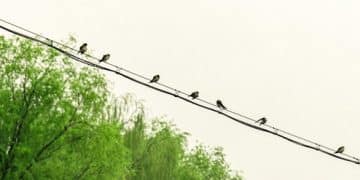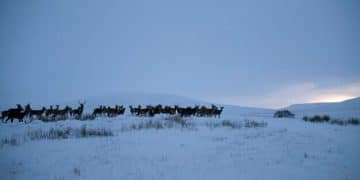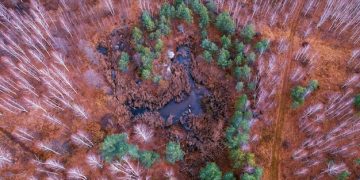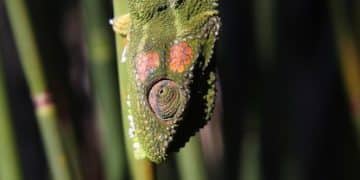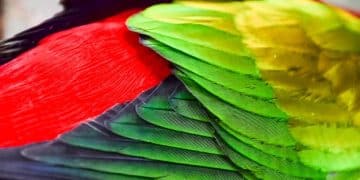Protecting Pollinators: Native US Bees at Risk & How to Help
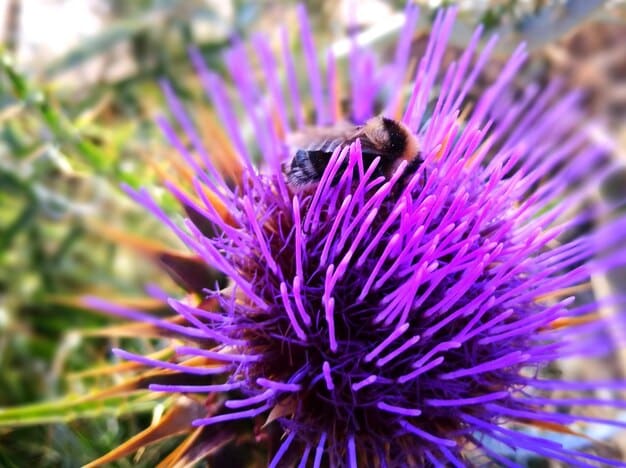
Protecting pollinators, especially native bee species in the US, is crucial for maintaining biodiversity and agricultural stability; learn about three species facing extinction and actionable steps you can take this season to support their survival.
Did you know that several native bee species in the United States are facing extinction? **Protecting Pollinators: 3 Native US Bee Species Facing Extinction and What You Can Do This Season** is more crucial than ever, and understanding the threats they face is the first step in helping these vital creatures.
Understanding the Pollinator Crisis in the US
The decline of pollinator populations, including bees, butterflies, and other insects, is a significant environmental concern in the United States. This decline threatens both our ecosystems and our food supply. Understanding why this is happening is key to **protecting pollinators**.
The Importance of Pollinators
Pollinators play a vital role in the reproduction of plants. They transfer pollen from one flower to another, enabling fertilization and the production of fruits, vegetables, and seeds. This process is essential for maintaining biodiversity and supporting agricultural productivity.
Factors Contributing to Pollinator Decline
- Habitat Loss: The destruction of natural habitats due to urbanization, agriculture, and deforestation reduces the availability of food and nesting sites for pollinators.
- Pesticide Use: Neonicotinoids and other pesticides can have harmful effects on bees, including impaired navigation, reduced foraging ability, and colony collapse.
- Climate Change: Changes in temperature and precipitation patterns can disrupt the synchrony between pollinators and the plants they depend on, leading to mismatches in timing and reduced food availability.
- Disease and Parasites: Bees are susceptible to various diseases and parasites, such as the varroa mite and nosema fungus, which can weaken colonies and increase mortality rates.
Addressing these factors requires a multi-faceted approach, including habitat restoration, reduced pesticide use, and measures to mitigate climate change. By understanding the challenges **pollinators** face, we can take effective action to protect them.
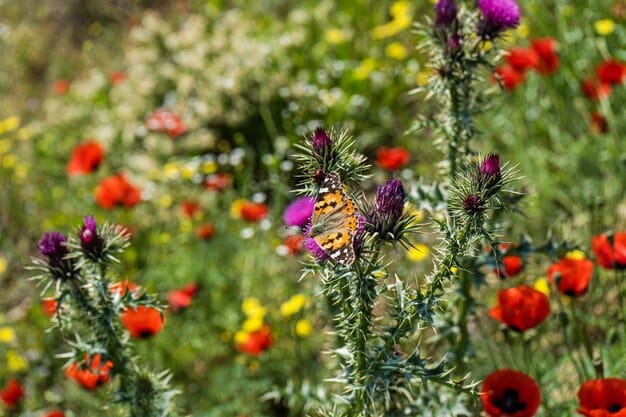
Rusty Patched Bumble Bee (Bombus affinis): A Critical Case
The rusty patched bumble bee (Bombus affinis) is one of the most critically endangered bee species in the United States. Once common across the eastern and Midwestern states, its populations have declined dramatically in recent decades. **Protecting Pollinators** means paying special attention to this bee.
Decline and Range
Historic records show that the rusty patched bumble bee was once abundant in 28 states and provinces across the eastern and Midwestern US and Canada. Since the late 1990s, its populations have plummeted by nearly 90%, and it now occupies only a fraction of its former range.
Causes of Decline
- Habitat Loss: The conversion of grasslands and prairies to agricultural and urban areas has reduced the availability of nesting sites and floral resources for the rusty patched bumble bee.
- Pesticide Use: Exposure to neonicotinoid insecticides, commonly used in agriculture, can impair the bee’s foraging ability, navigation, and reproduction.
- Disease and Parasites: The rusty patched bumble bee is susceptible to pathogens such as Nosema bombi, which can weaken colonies and increase mortality rates.
Franklin’s Bumble Bee (Bombus franklini): On the Brink
Franklin’s bumble bee (Bombus franklini) is considered one of the rarest and most endangered bees in the United States. Native to a small region of southern Oregon and northern California, it has not been seen since 2006 and may already be extinct. **Protecting Pollinators** requires acknowledging the potential loss of this species.
Habitat and Range
Franklin’s bumble bee has the smallest range of any bumble bee in North America, historically confined to a 190-mile stretch of southern Oregon and northern California. Its preferred habitat includes open meadows, grasslands, and forests, where it forages on a variety of wildflowers.
Potential Causes of Decline
- Small Population Size: With its limited range, Franklin’s bumble bee has always had a small population size, making it vulnerable to extinction.
- Disease: Some researchers believe that disease may have played a significant role in the bee’s decline.
- Habitat Degradation: Habitat loss and degradation due to logging, grazing, and development may have further contributed to the bee’s decline.
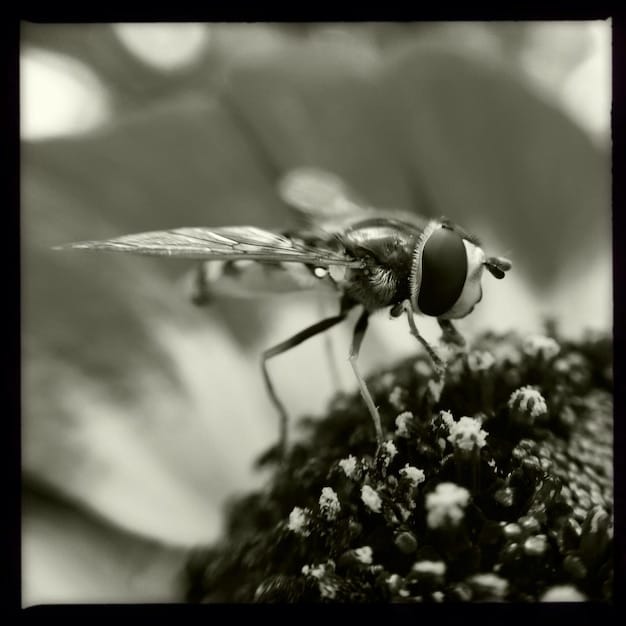
Blue Calamintha Bee (Osmia calaminthae): A Specialist Under Threat
The blue calamintha bee (Osmia calaminthae) is a specialist bee found in central Florida, known for its vibrant blue color and its dependence on the Ashe’s calamint plant. This bee is now threatened due to habitat loss and the decline of its host plant. **Protecting Pollinators** includes conserving specialized species like the blue calamintha bee.
Dependence on Ashe’s Calamint
The blue calamintha bee is particularly concerning because it only pollinates Ashe’s calamint, a rare plant itself. The bee’s life cycle is intricately linked to this plant, making it extremely vulnerable to any threats affecting Ashe’s calamint.
Conservation Efforts
Conservation efforts are crucial to **protecting pollinators**, specifically the blue calamintha bee and its host plant. These efforts include habitat restoration of Ashe’s calamint populations and raising awareness in the community. By focusing on conserving this unique species, there is hope for stability or even future growth.
Actions You Can Take This Season
You can take action to **protecting pollinators** and help prevent the extinction of native bee species in your own backyard and community. Here are some practical steps you can take this season:
Plant Native Flowers
Choose native plants that provide food and shelter for bees and other pollinators. Select a variety of species that bloom at different times throughout the growing season to ensure a continuous supply of nectar and pollen. Examples include coneflowers, sunflowers, and milkweed.
Reduce Pesticide Use
Avoid using pesticides in your garden and on your property, as they can be harmful to bees and other beneficial insects. If you must use pesticides, choose bee-friendly options and apply them carefully, following label instructions.
Provide Nesting Habitat
- Bee Houses: Install bee houses or nesting blocks to provide shelter for solitary bees, which make up the majority of bee species.
- Undisturbed Areas: Leave some areas of your garden undisturbed, with bare soil or leaf litter, to provide nesting sites for ground-nesting bees.
- Water Sources: Provide a shallow dish of water with pebbles or marbles for bees to land on and drink.
Support Local Conservation Efforts
Get involved in local conservation efforts to **protecting pollinators** and their habitats. Volunteer with organizations that conduct habitat restoration projects, educate the public about pollinator conservation, or advocate for pollinator-friendly policies.
| Key Point | Brief Description |
|---|---|
| 🌱 Plant Natives | Choose native plants to provide food for bees. |
| 🚫 Reduce Pesticides | Avoid harmful pesticides in your garden. |
| 🏠 Nesting Habitat | Provide bee houses for solitary bees. |
| 💧 Water Source | Offer shallow water dishes for bees to drink. |
Frequently Asked Questions About Pollinator Conservation
▼
Pollinators are crucial for plant reproduction. They transfer pollen between flowers, which is necessary for the production of fruits, vegetables, and seeds. This process supports both natural ecosystems and agriculture.
▼
Planting native flowers is the best way to attract pollinators. Some good options include coneflowers, sunflowers, milkweed, and bee balm. Choose a variety of plants that bloom throughout the season to provide a continuous food source.
▼
Avoid using pesticides whenever possible. Instead, try natural pest control methods like attracting beneficial insects, using insecticidal soap, or hand-picking pests off plants. If you must use pesticides, choose bee-friendly options and apply them carefully.
▼
A bee house provides nesting habitat for solitary bees. These bees lay their eggs in small tubes or cavities, which are protected from predators and the elements. By providing bee houses, you can help increase the population of these important pollinators.
▼
Many local organizations are working to protect pollinators and their habitats. Volunteer with these groups to conduct habitat restoration projects, educate the public about pollinator conservation, or advocate for pollinator-friendly policies.
Conclusion
The fate of native bee species in the United States is in our hands. By understanding the threats they face and taking action to **protecting pollinators**, we can help ensure the survival of these important creatures and the health of our ecosystems.
